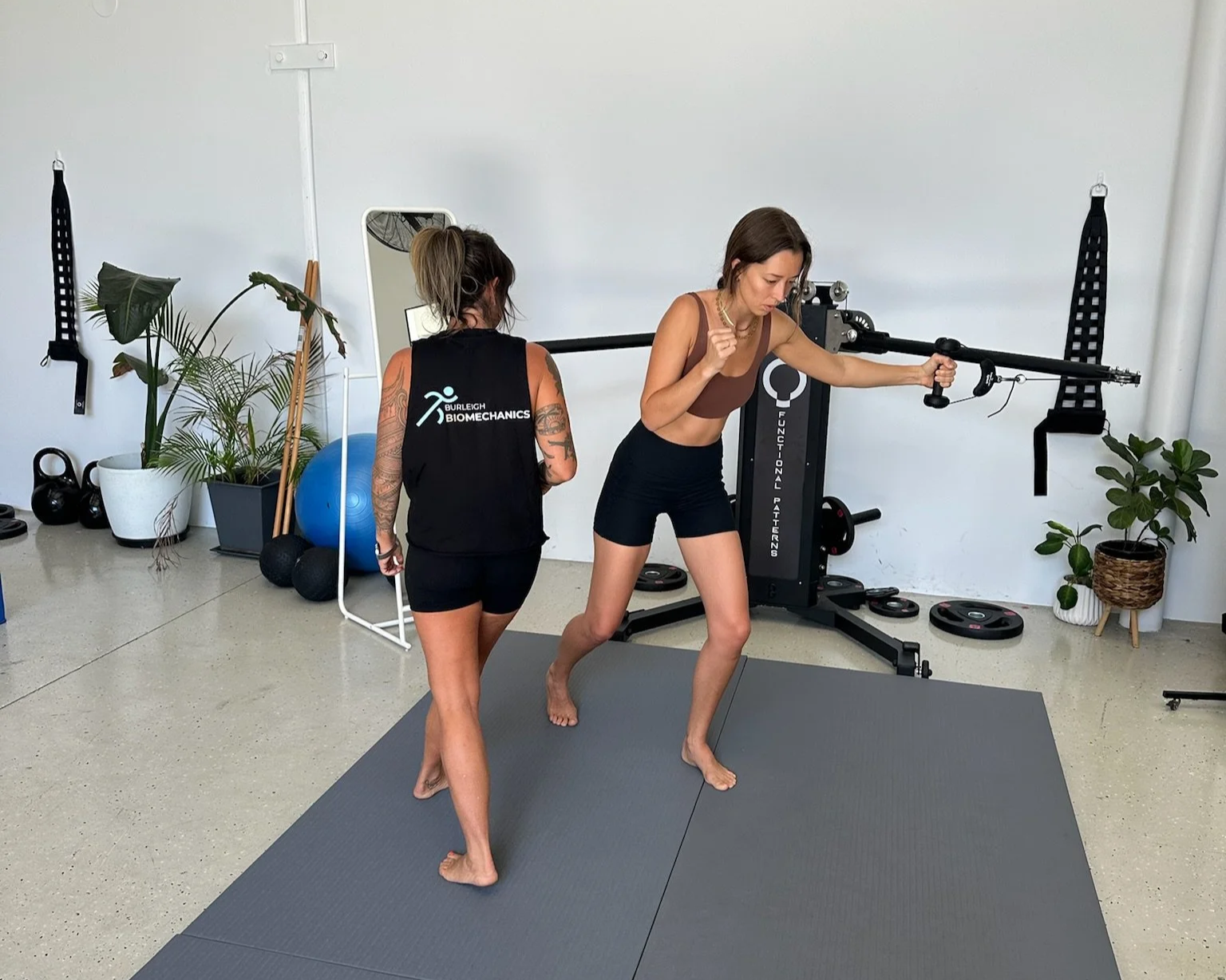Hypermobility in the Hips: Why Your Hip Feels Unstable
If your hips click, shift, or feel “loose,” you might have hip hypermobility — a common but often misunderstood cause of hip pain and instability.
What Is Hip Hypermobility?
Hip hypermobility develops when passive structures — ligaments, joint capsules, and fascia — take on the role that muscles should control. Rather than being “too flexible,” the issue is a loss of integrated tension through the kinetic chain.
When the pelvis, ribcage, and femur lose synchrony during gait, the hip joint experiences uncontrolled motion. The deeper stabilisers disengage, and superficial tissues tighten to compensate. This creates the unstable-but-tight pattern many people feel in their hips.
How It Produces Hip Instability and Pain
The hip’s job is to transfer force between the upper and lower body. When that force isn’t channelled efficiently — due to poor sequencing between the glutes, adductors, and obliques — the system leaks tension into joints.
Common outcomes of hip hypermobility include:
Clicking or shifting in the front of the hip
Compressive pain from anterior translation of the femur
Glutes that don’t engage effectively in gait
Tight hip flexors and adductors from over-recruitment
Knee or ankle instability downstream
What feels like a “loose joint” is usually a coordination problem, not a flexibility advantage.
Why Traditional Treatments Don’t Create Stability
Stretching, band work, and generic strength exercises don’t reprogram how the hip integrates with the rest of the body. They isolate motion instead of reorganising the myofascial tension network.
Our hypermobility therapy for hips focuses on restoring the timing and direction of muscular contractions within gait mechanics. By rebuilding how force is sequenced through the pelvis and ribcage, stability becomes an emergent property — not something forced by bracing or squeezing.
Our Hip Hypermobility Treatment Process
1. Structural and Gait Assessment
We analyse standing posture, gait cycle, and joint positioning to identify the planes of motion where control is lost. This provides a map of how the hip interacts with surrounding segments — not just what it does in isolation.
2. Tension Sequencing Drills
We retrain glute–adductor–core coordination through closed-chain mobility exercises that re-establish pelvic control and reciprocal motion. Each drill is designed to restore compression through the hip socket while reducing unnecessary ligament load.
3. Integration Under Load
Once stability is measurable, we introduce dynamic loading that mimics walking and running mechanics. The goal isn’t bigger muscles — it’s precision in timing. When the kinetic chain is sequenced correctly, hip pain relief follows naturally.
Outcomes of Proper Hip Integration
Improved load transfer from foot to pelvis
More balanced tension between internal and external rotators
Reduced compensation in the lumbar spine
Sustained pelvic neutrality through movement
Decreased anterior hip irritation and clicking
The objective isn’t to move more — it’s to move better within the ranges that serve gait.
Who Benefits From This Work?
Individuals with hip instability or recurrent clicking
Dancers, yogis, or lifters who rely on passive flexibility
People diagnosed with joint hypermobility or EDS spectrum
Clients with chronic anterior hip pain despite strong muscles
Next Step to True Hip Stability
Precision requires assessment. We don’t guess — we measure.
Book an initial 90-minute session to evaluate your gait, posture, and hip stability profile.
Clinic: Burleigh Heads, serving the Gold Coast region including Miami, Palm Beach, Mermaid Waters, and Varsity Lakes.
Experience data-driven hip hypermobility treatment on the Gold Coast — built on biomechanics, not stretching.
FAQs
Can you stabilise hypermobile hips?
Yes. By restoring tension sequencing through gait mechanics, muscles reclaim the role of joint stabilisers.
Should I stretch hypermobile hips?
No. Stretching amplifies instability by further lengthening tissues already under-tensioned. The focus should be on coordinated compression and balance.
Why do my hips feel both tight and loose?
Because instability in one plane causes over-recruitment in another. Our process balances those competing tensions through integrated drills.
Will this limit my movement?
No — it refines it. Controlled motion through correct vectors increases usable range, not restricts it.



